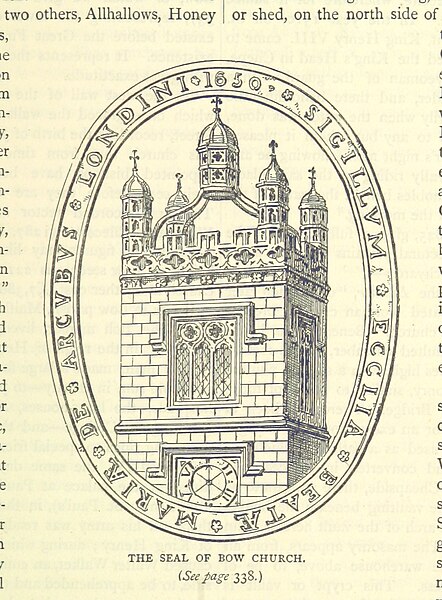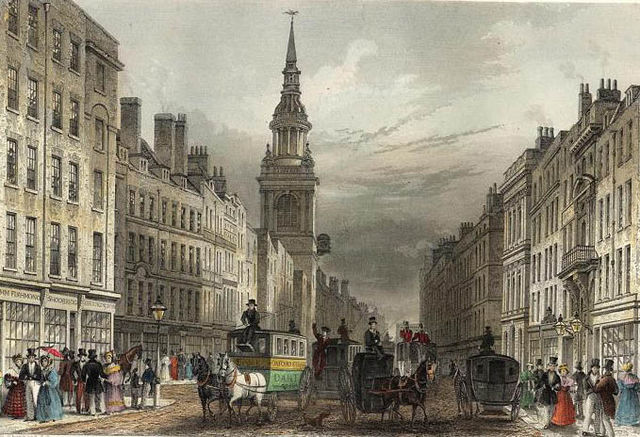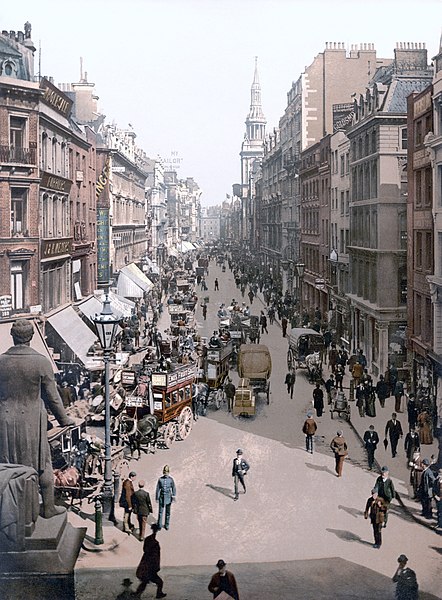The Church of St Mary-le-Bow is a Church of England parish church in the City of London, England. Located on Cheapside, one of the city's oldest thoroughfares, the church was founded in 1080, by Lanfranc, Archbishop of Canterbury. Rebuilt several times over the ensuing centuries, the present church is the work of Sir Christopher Wren, following the Great Fire of London (1666). With its tall spire, it is still a landmark in the City of London, being the third highest of any Wren church, surpassed only by nearby St Paul's Cathedral and St Bride's, Fleet Street. At a cost of over £15,000, it was also his second most expensive, again only surpassed by St Paul's Cathedral.
View from Bow Churchyard
The tower of St. Mary-le-Bow as it appeared before the Great Fire
The ruins of St. Mary-le-Bow after the Blitz
Floor plan
Cheapside is a street in the City of London, the historic and modern financial centre of London, England, which forms part of the A40 London to Fishguard road. It links St. Martin's Le Grand with Poultry. Near its eastern end at Bank junction, where it becomes Poultry, is Mansion House, the Bank of England, and Bank station. To the west is St. Paul's Cathedral, St Paul's tube station and square.
The 1547 coronation procession of Edward VI passing the Eleanor cross in Cheapside (West Cheap)
Cheapside in 1823, looking west towards St Paul's Cathedral
A view of Cheapside published in 1837
Photochrom of Cheapside, c. 1890–1900








